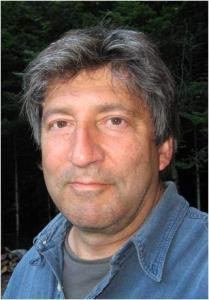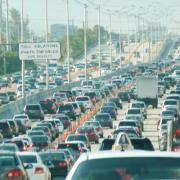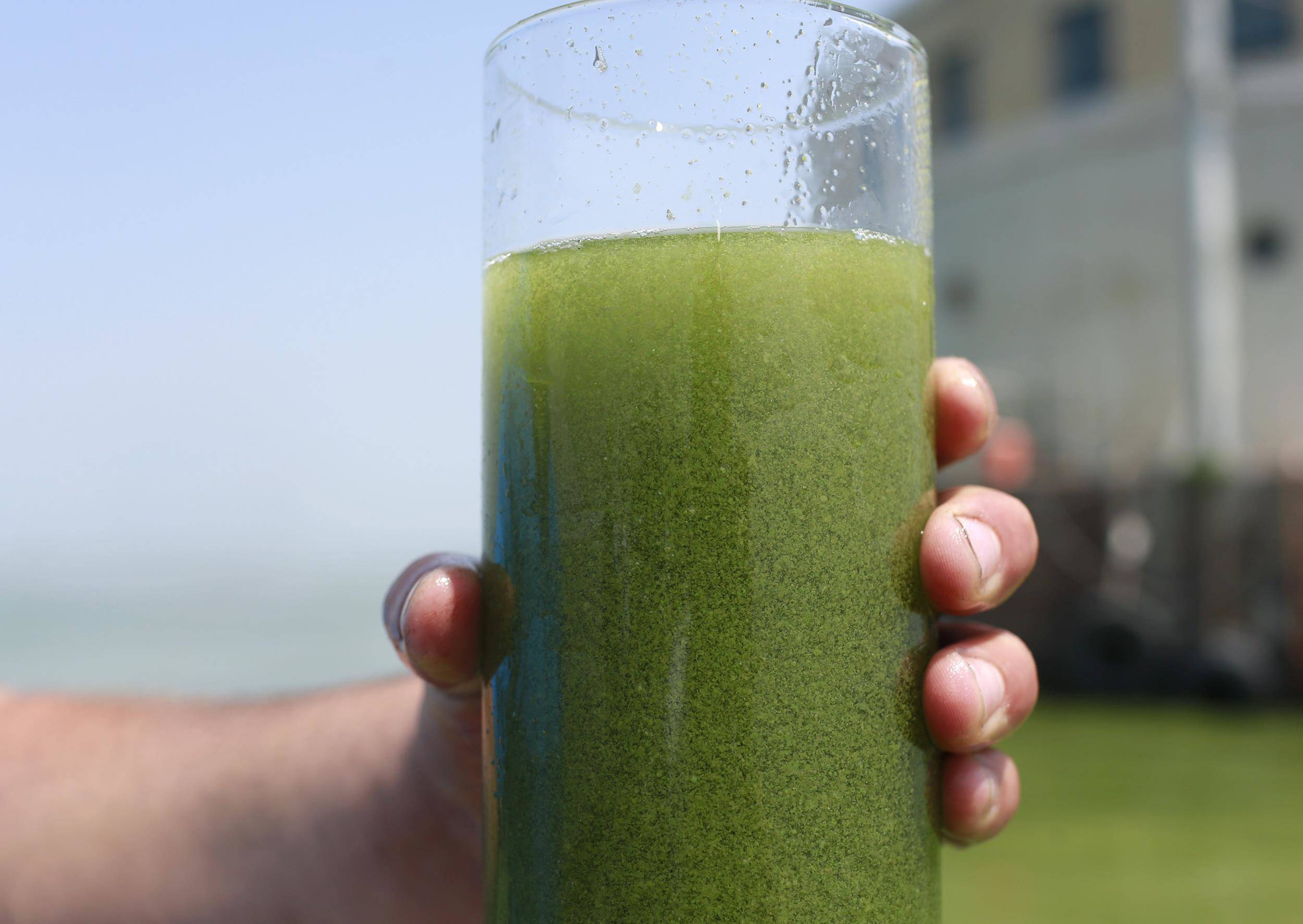Where Infinite Growth Meets Biophysical Limit
by Eric Zencey
 Eric Zencey is the author of the recently released book The Other Road to Serfdom and the Path to Sustainable Democracy. This essay is adapted from Zencey’s forthcoming history of Vermont’s environmental movement, Greening Vermont: The Search for a Sustainable State, which he co-authored with Elizabeth Courtney.
Eric Zencey is the author of the recently released book The Other Road to Serfdom and the Path to Sustainable Democracy. This essay is adapted from Zencey’s forthcoming history of Vermont’s environmental movement, Greening Vermont: The Search for a Sustainable State, which he co-authored with Elizabeth Courtney.
To achieve a sustainable, steady-state economy, we’re going to have to limit matter-and-energy throughput in the economy to what the planet can sustainably give to us and what it can sustainably absorb from us. Against that physical limit, though, the economy continually exerts pressure: it’s structured for continual expansion of its matter-and-energy throughput, as we are encouraged to want, to seek, to produce and to own more and more and more. What we need are adaptive mechanisms that can reconcile the two.
One such policy adaptation is in place but hasn’t been fully developed or conscientiously applied.
The Clean Water Act (CWA) of 1972 instituted a national cleanup of the nation’s waterways, which had too long been treated as an open-access sink into which anyone could freely dump wastes and pollutants. Under the CWA, wastewater treatment facilities were built or upgraded and point source discharges — those coming from a single facility — were regulated and controlled. Water bodies that were considered dead in 1972 made remarkable recoveries.
Even so, by 2002 the Environmental Protection Agency (EPA) had categorized over 20,000 bodies of water (more than 40% of all those it assessed) as “impaired” — too polluted to be used for their “designated beneficial uses.” Clearly, if water quality was to be fully restored, more needed to be done.
The main problem was and continues to be “non-point” discharges — the diffuse pollution that is carried into waterways by runoff from land. Anything that is put on land can and will find its way into our waterways. The most problematic pollutants vary from basin to basin. Some of the most troublesome: the oil, gasoline, and road salt that find their way into our soils, streets, and parking lots as we use automobiles; untreated animal waste, including the burdens produced in some areas by farm animals and in others by pets; and fertilizers and pesticides, used by suburbanites to feed their lawns and by farmers to increase their yields in order to feed us.
The CWA outlined the manner in which non-point pollution was to be judged and limited: states were to identify impaired bodies of water and then set water quality standards for them. EPA rules written in 1985 and 1992 offered further guidance: states were to identify the pollutants that cause the impairment, and for each of those pollutants they were to identify the Total Maximum Daily Load (TMDL) that the body of water could absorb without being impaired. Their work would be reported to and reviewed by the EPA. How TMDLs would be enforced — how the scarce capacity of waterbodies to absorb effluents would be rationed — was left to state discretion.
Behind the notion of TMDL is sound, steady-state thinking: the capacity of bodies of water to absorb pollutants isn’t infinite, and the limits need to be discovered and respected.
Implementation and enforcement of the new rules wasn’t immediate. Some states, faced with significant expense, declined to comply with the law. Some sued to have the EPA do the job. The scientific work has been slow going. Between 1996 and 2003, a total of 7,327 TMDLs were approved nationwide, representing just 17% of the 42,193 bodies of water listed as impaired.
In Vermont, the issue of TMDLs came to a head in 1999, and experience there may be a guide to promoting the implementation of this finite-planet idea elsewhere. The controversy began with an application from Lowe’s, Inc. to build a store in South Burlington. The company received the necessary stormwater permits from the state in July of 2001, despite the fact that the store and its parking lot would force acres of runoff into Potash Brook, an impaired waterway. The Conservation Law Foundation (CLF) immediately appealed the permit decision. The appeal said that under the CWA, additional pollutants could not be discharged into the brook unless a mitigation and cleanup strategy were in place — a strategy that would require determination of the appropriate TMDLs, which hadn’t been prepared.
There were no TMDLs for Potash Brook for a simple reason: despite its carefully protected (and generally well-deserved) image as an environmentally aware state, Vermont hadn’t calculated any TMDLs at all. Meanwhile, well over 1,000 state-issued stormwater discharge permits had expired and were up for review. The Conservation Law Foundation had brought to light a major problem in the way that Vermont was managing its water resources and had revealed that the state was violating laws established under the Clean Water Act. “Vermont’s Agency of Natural Resources,” said Chris Kilian, the CLF’s Natural Resources Project Director, “can no longer turn a blind eye to our serious water pollution problems. Rubber-stamping permits that will add more pollution is not acceptable.”
CLF appeals of the Lowe’s decision were pending when the two sides announced a settlement in May 2006. Lowe’s agreed to implement higher cleanup standards than the state had required. Measures included stormwater retention ponds and filtration systems for runoff not only for Lowe’s 12-acre site, but the entire commercial plaza of which the new store was a part. Taken together these remedies were designed to eliminate all impact on Potash Brook. As part of the agreement, Lowe’s agreed to monitor stream conditions both upstream and downstream of its discharge, to ensure that the “zero harm” standard would be met.
If the CWA can continue to encode finite-planet assumptions through its call for discovery of TMDLs of pollutants in the country’s bodies of water, and if those limits can be enforced through state action or by citizen lawsuits, one key element of a steady-state economy will be in place.
But it’s not going to be easy to reach that point. TMDLs remain a controversial and difficult topic, as might be expected of a regulatory device that operates at the intersection of human ambition and biophysical limit. And the state-by-state foundation of the law may hamper its effectiveness. For instance, of the fifty water bodies in Vermont that are officially classified as impaired because of acidification, the source of the pollutant — acid raid — is well beyond the power of the state to control. And much non-point-source water pollution in Vermont has its origin in agricultural practices, which Vermont legislators and regulators are loathe to tackle. As the strong base of the state’s economy and as a prime preserver of the working landscape, farming provides all Vermonters with many benefits, and the environmental movement is unanimous in wanting to see a healthy agricultural economy in the state. But farming practices are responsible for 38% of the phosphate pollution that leads to regular algae blooms in Lake Champlain (making it the second largest category, after urbanization at 46%). The blooms can be toxic to wildlife, humans, and domestic pets, and they prevent recreational use of the parts of the lake that are affected. If Vermont is to achieve its water quality goals, it will have to enforce TMDLs for all waters that drain into its lakes, even if those limits require changes in agricultural practice. By 2012, Vermont had established TMDLs for roughly 60% of the waters that had been identified as needing them.
The concept of TMDLs can be extended to other sinks and pollutants. A TMDL could be set for diesel exhaust from trucks, limiting the amount to what a particular airshed can absorb without ill effect. Paired with a similar understanding of the limits of source services — like the maximum sustainable yield figures that can be calculated for forests and fisheries — TMDLs point to one way of achieving a balance between human activity and planetary systems.
The research necessary to determine a TMDL is costly, and comes at a time when public budgets are already being strained (by, among other causes, a declining energy return on investment for oil that means more and more of our economy’s energy is dedicated to getting that energy). If we don’t like the expense of government regulation, if it looks like we can’t afford all that governmental overhead, then we’ve basically got three choices: retreat into an infinite-planet state of denial and let our economy destroy our habitat; require private enterprise to fund the necessary research as part of the cost of doing business on what is undeniably a finite planet; or find ways (like a carbon tax or other uptake and throughput taxes) to meter inputs sufficiently to bring economic activity well within biophysical limit, thereby making the regulatory burden and research expense of TMDL enforcement less needed.






From your well thought out article it is clear it takes dedicted maturity at grass roots tp put a general idea concerning environmental limmitations into practice in an affordable way that stimulates conscience rather than fatalism .
I suspect that many are reflecting deeply on your post ,Ihave read it many times and will read it again.
many thanks